January Jaunts: Top Travel Destinations to plan your Remarkable Winter Escape
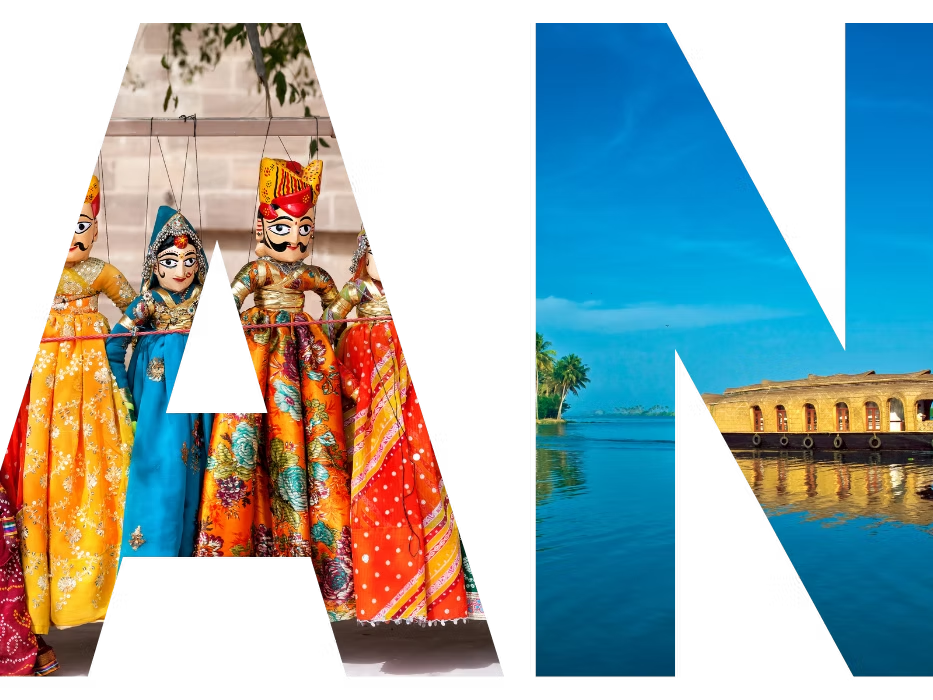
Imagine: As the calendar turns to January, India awakens from its slumber to welcome visitors with a wonderful embrace of experiences that will make your heart skip a beat. It’s almost as if the country is shouting, “Come on, let’s make memories together!” With the winter chill in the air, India’s travel locations in January are a treasure trove waiting to be discovered. India offers it all, from the sun-soaked beaches of Goa, where the party never stops, to the towering forts of Rajasthan, which whisper tales of monarchy, and the calm backwaters of Kerala, which call with their serene beauty. We’re not simply talking about travel in this article; we’re embarking on an adventure, a whirlwind romance with India in January. Whether you’re someone looking for alpine highs, a beach bum looking for sandy coasts, or a culture vulture looking for unparalleled immersion, we have you covered. Read on for a ready-to-embark-on travel itinerary and guide for your 20-day long winter escape 🙂 Here are the top 3 places you can enjoy your January at! GOA A 20-day trip to Goa in January allows plenty of time to enjoy the beaches, culture, cuisine, and natural beauty of this renowned Indian tourist destination. Here’s a thorough travel itinerary to help you make the most of your trip: Days 1-3: Goa Arrival Arrive at Dabolim Airport or Madgaon Railway Station in Goa. Make your way to a beachfront town like Calangute, Baga, or Anjuna. Spend the first several days lounging on the beach, getting to know the locals, and enjoying the lively nightlife. Days 4-6: North Goa Visit North Goa’s beaches, such as Calangute, Baga, Anjuna, and Vagator. Take a look at the historic Aguada Fort and Aguada Lighthouse. Take part in water sports such as paragliding and jet skiing. On Wednesdays, visit the Anjuna Flea Market for shopping and local crafts. Find top North Goa hotels where you can enjoy a luxurious and comfortable stay here! Days 7-9: Central Goa Relocate to a more central area, such as Panaji, Goa’s capital. Visit the St. Augustine Tower and the Basilica of Bom Jesus in Fontainhas’ Latin Quarter. Spend a day in Old Goa, where you may visit the Se Cathedral, the Church of St. Cajetan, and the Archaeological Museum. In the evening, take a river boat on the Mandovi River. You can find more plans to add to your travel itinerary by reading this blog. Days 10-12: Relaxation in South Goa Visit South Goa’s quieter beaches, such as Palolem, Agonda, and Colva. Go to the Cabo de Rama Fort for stunning views of the coastline. Visit the Cotigao Wildlife Sanctuary to see the native flora and fauna. Days 13-15: Nature and Adventure Travel to the Western Ghats to see the Dudhsagar Waterfalls. To get to the falls, you can take a walk, a vehicle safari, or a rail ride. Pay a visit to the Bhagwan Mahavir Wildlife Sanctuary and the Mollem National Park. Discover the Tambdi Surla Temple, a 12th-century wonder tucked away in the jungle. Days 16-18: Beach Relaxation and Water Sports Return to your favourite beach in North Goa or discover new ones. Visit quieter beaches such as Ashwem, Morjim, and Arambol. Go on a dolphin-watching, snorkelling, or scuba diving cruise. Looking for in-depth details about the water sports offered in Goa? Get adventure-ready by reading more about them here! Day 19-20: Shopping and Culinary Delights Sample Goan cuisine at nearby restaurants, including vindaloo, xacuti, and bebinca. Look for souvenirs and handicrafts in the local marketplaces. Take in your final sunset in Goa and reminisce on your unforgettable journey. Also read: Top romantic things that you can do with your partner in Goa! ???? In a nutshell, Goa is a sliver of paradise that begs to be explored. Consider renting a scooter or car for easy transit throughout your vacation, and book your accommodations well in advance, especially if you’re travelling in January, which is peak tourist season. RAJASTHAN A 20-day journey to Rajasthan in January allows you to immerse yourself in the rich history, culture, and different landscapes of this enthralling Indian state. Here’s a detailed itinerary to help you make the most of your Rajasthan adventure: Day 1-3: Jaipur Arrival Arrive at the Sanganer International Airport or the Jaipur Junction Railway Station in Jaipur. Check into your hotel in the Pink City. Explore Amber Fort, City Palace, Hawa Mahal, and Jantar Mantar, among other prominent Jaipur attractions. Bonus! – 7 day trip to Rajasthan: Tips and travel plan Day 4-6: Jaipur and the Surrounding Areas Visit Nahargarh Fort for panoramic views of the city. Explore the markets of Jaipur for authentic Rajasthani crafts and textiles. Take a day excursion to Amer and visit Jaigarh Fort. Visit the Albert Hall Museum and lunch at a typical Rajasthani restaurant. Day 7-9: Pushkar Drive to Pushkar, a holy town famous for its sacred lake and Brahma Temple. Visit the Pushkar Camel Fairground if your trip coincides with the fair (which is normally held in November). Explore the town’s lively streets and markets. Day 10-12: Jodhpur Travel to the “Blue City” of Jodhpur. Mehrangarh Fort, Jaswant Thada, and Umaid Bhawan Palace are all worth seeing. Discover the busy markets surrounding the Clock Tower and Sardar Market. Day 13-15: Udaipur Udaipur, the “City of Lakes,” is a short drive away. City Palace, Jagdish Temple, and Saheliyon Ki Bari are all worth seeing. Take a boat trip on Lake Pichola and see the Lake Palace and Jag Mandir from the water. Day 16-18: Rajasthan in the countryside Stay at a vintage hotel or homestay in rural Rajasthan. Discover the culture, traditions, and food of the area. Visit villages, meet residents, and take part in cultural events. You can even explore an offbeat village in Rajasthan, of which more details can be found by clicking here! Day 19-20: Jaisalmer Travel to the “Golden City” of Jaisalmer. Jaisalmer Fort, Patwon Ki Haveli, and Gadisar Lake are all
AI Technology and Travel: How it’s Changing the Way We Explore India

The development of AI (Artificial Intelligence) technology has drastically changed several industries, including travel, in the current digital era. The way we explore India is one area in which AI is having a significant impact. AI is transforming the travel experience, opening up new options and enriching our experiences in previously inconceivable ways. Examples include personalized trip recommendations and intelligent virtual tour guides. In this blog, we will explore the fascinating ways artificial intelligence (AI) technology is transforming the travel industry in India and enabling visitors to explore and fully immerse themselves in the nation. Travellers’ individual requirements and preferences are catered to by a variety of cutting-edge applications and services that have emerged as a result of the fusion of AI and travel. AI technology is enabling tourists to experience India like never before, from customised trip recommendations and knowledgeable virtual tour guides to seamless language translation and augmented reality experiences. In this blog, we’ll explore the fascinating ways AI is transforming the travel industry in India, facilitating the discovery of its beauties and empowering visitors to make lifelong experiences. India is a nation with many different cultures, languages, and topographies. It is a country with both age-old customs and contemporary advancements. The way we explore India is changing as a result of the quick development of technology. Artificial intelligence (AI) is one of the most important technical developments that has had an impact on the tourism business. India’s tourism industry is changing because to AI technology, which makes it simpler for tourists to plan their visits, find their way around unfamiliar places, and get a taste of this intriguing nation’s culture. Personalized Recommendations In order to provide smarter recommendations and more individualised experiences, AI algorithms are continuously learning from user preferences, behaviour, and feedback. Utilising this technology, travel platforms provide individualised recommendations for activities, lodging, food, and other services based on user interests and preferences. AI is revolutionising how tourists explore India, enabling them to find hidden gems and make lifelong memories. It does this by recommending off-the-beaten-path locations, genuine local experiences, or specialised activities The capacity to offer individualised recommendations is one of the most important advantages of AI technology in the tourism industry. To make personalised recommendations for lodging, activities, and restaurants, AI systems examine user interests and behaviour. Travellers can now receive recommendations that are specifically tailored to their interests, spending capacity, and travel preferences. For instance, machine learning is used by AI-powered recommendation systems like The Tarzan Way to provide consumers personalised trip plans. To provide personalised travel itineraries, these services examine user data, including search history, booking trends, and travel preferences. By giving them recommendations that are based on their needs, this not only saves travellers time but also improves their trip experiences. Intelligent Itinerary Creation The way we arrange our travel is also changing as a result of AI. AI algorithms are increasingly being used for intelligent itinerary building. Based on the choices, interests, and limits of the user, these algorithms generate optimised travel plans. For dynamic itinerary changes, they can also include real-time data. Our product, The Tarzan Way, employs AI algorithms to produce custom trip plans for individuals. To design an itinerary that is best suited to the user’s requirements, we consider variables including travel time, distance, and price. By giving them a well-planned schedule, this not only saves travellers time but also enables them to make the most of their trip. Smart Accommodation and Transport Suggestions The way we travel in India is also changing as a result of AI-powered apps for locating the finest lodging and transit choices. These technologies make it simpler for travellers to locate the best offers on lodging and transportation by using machine learning to forecast pricing trends and availability. Our platform uses AI technology to offer consumers helpful travel and lodging suggestions. Numerous platforms employ AI algorithms to optimise routes and give users the most cost-effective transportation options, as well as machine learning to forecast hotel room demand and change prices. Language and Cultural Assistance India is renowned for having a wide variety of languages spoken throughout the nation. Travellers who may not be fluent in the local languages can communicate with one another thanks to AI-powered language translation technology. Instant translation of text, signs, and even spoken phrases is possible with the help of mobile apps and gadgets with AI translation skills. This makes it possible to communicate with locals easily, read menus, and comprehend critical information. Travellers now have more opportunities to interact authentically with Indian culture, people, and heritage thanks to this advancement in AI technology. Tools for language interpretation and translation powered by AI are also revolutionising how we discover India. These resources support cross-cultural understanding and assist travellers in overcoming language obstacles. Travellers can get real-time language translation through websites like Google Translate and iTranslate. These technologies make it simple for visitors to interact with locals, read signage, and find their way around unfamiliar places. Additionally, they offer etiquette advice and cross-cultural counselling to help visitors better grasp the cultural customs of the areas they visit. AI-Enabled Travel Safety and Security Additionally, AI technology is significantly increasing traveller security and safety in India. Artificial intelligence (AI)-powered solutions are enhancing security measures and enhancing the whole travel experience, from facial recognition systems at airports to smart monitoring systems in public settings. AI systems can also examine data trends to find anomalies or potential threats, generating early alerts and aiding in crisis management. Travellers can experience more peace of mind by utilising AI technology since they will know that their security and safety are top priorities. AI technology is increasing travel security and safety. Travel risk assessment is being done using predictive analytics and machine learning, and real-time monitoring of travel advisories and safety alerts is becoming increasingly prevalent. Travellers can get up-to-date safety and security information from websites
Mindful Travel: A Guide to Slow and Sustainable Travel in India
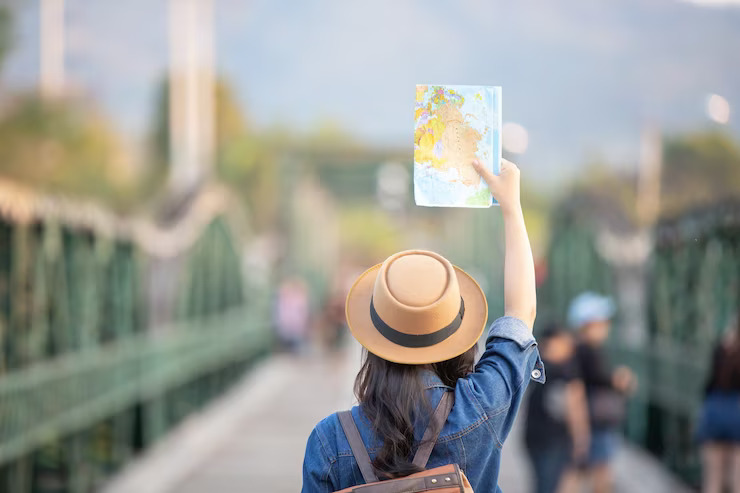
Introduction: In a world filled with fast-paced travel itineraries and overcrowded tourist attractions, there is a growing movement towards a more mindful and sustainable approach to travel. Mindful travel encourages us to slow down, immerse ourselves in the local culture, and have a positive impact on the places we visit. With its rich heritage, diverse landscapes, and vibrant communities, India offers a perfect canvas for mindful travel experiences. This guide aims to introduce you to the concept of mindful travel and provide insights into how you can embark on a slow and sustainable journey through India. By embracing mindfulness, we can cultivate a deeper connection with the destinations we explore, interact with local communities respectfully, and minimize our environmental footprint. From experiencing ancient traditions in spiritual hubs like Varanasi and Rishikesh to exploring off-the-beaten-path destinations like Hampi and Mawlynnong, we will delve into the beauty of India’s diverse regions and offer suggestions for immersive and sustainable activities. By practicing mindful travel, we can create meaningful memories, support local economies, and contribute to the preservation of India’s cultural and natural heritage. So, let’s embark on a journey that nourishes the soul and leaves a positive impact on the world around us. Understanding Mindful and Sustainable Travel Mindful and sustainable travel goes beyond merely visiting popular tourist attractions and ticking off items on a checklist. It is an approach that emphasizes connecting with the local culture, minimizing environmental impact, and supporting local communities. By practicing mindful travel, we can foster a deeper understanding and appreciation of the destinations we visit while leaving a positive legacy for future generations. Mindful travel encourages us to slow down, be present at the moment, and engage with our surroundings. It involves immersing ourselves in local traditions, trying authentic cuisine, and interacting with local communities in a respectful and meaningful way. This may include participating in cultural activities, volunteering for local initiatives, or supporting local artisans and businesses. Sustainable travel focuses on reducing our ecological footprint and preserving the natural environment. This can be achieved by choosing eco-friendly accommodations, opting for public transportation or cycling instead of relying on private vehicles, and practicing responsible waste management. It also involves respecting wildlife and natural habitats, refraining from activities that exploit animals, and supporting conservation efforts. In India, mindful and sustainable travel can take various forms. It can mean exploring rural villages and promoting community-based tourism, engaging in eco-trekking and wildlife conservation activities or supporting local artisans and craftspeople. By embracing these principles, we can ensure that our travel experiences in India are not only enriching for ourselves but also contribute positively to the cultural, social, and environmental fabric of the country. Research and Planning Research and planning are essential for a mindful and sustainable travel experience in India. Here are some key steps to undertake: Destination Research: Begin by researching different destinations in India that align with your interests and values. Look for places that offer opportunities for cultural immersion, sustainable activities, and eco-friendly accommodations. Consider the environmental and social impact of tourism in the area and choose destinations that promote responsible tourism practices. Local Culture and Customs: Familiarize yourself with the local culture, traditions, and customs of the places you plan to visit. This will enable you to respect and appreciate the local way of life and mindfully interact with the community. Learn a few basic phrases in the local language to communicate and connect with the locals. Sustainable Accommodation: Look for accommodations that prioritize sustainability, such as eco-lodges, homestays, or hotels with green certifications. Check if they have initiatives in place to conserve energy and water, minimize waste, support the local economy, and preserve the natural environment. Consider staying in locally-owned establishments to contribute directly to the community. Transportation: Choose sustainable transportation options to minimize your carbon footprint. Whenever possible, opt for public transportation, walk, or cycle to explore the destinations. If long distances need to be covered, consider taking trains instead of flights as they are more eco-friendly. Responsible Activities: Engage in activities that promote sustainability and respect for local resources. Support local artisans and businesses by purchasing locally-made souvenirs and handicrafts. Be mindful of wildlife encounters and choose responsible wildlife tourism options that prioritize animal welfare and conservation. Waste Management: Be conscious of your waste generation and practice responsible waste management. Minimize the use of single-use plastics, carry a reusable water bottle and shopping bag, and dispose of waste properly in designated bins. Respect for Nature: Respect the natural environment and wildlife by following designated trails, not disturbing flora and fauna, and adhering to responsible ecotourism practices. Avoid activities that exploit animals or contribute to habitat degradation. Engage with Local Communities: Interact with local communities in a respectful and meaningful way. Learn about their traditions, support local initiatives and social enterprises, and engage in community-based tourism activities. Respect local customs, dress codes, and etiquette. By conducting thorough research and planning, you can ensure that your travel experiences in India are mindful and sustainable, and leave a positive impact on the environment and local communities. Engaging with Local Communities Engaging with local communities is a key aspect of mindful and sustainable travel in India. It not only enriches your travel experience but also promotes cultural exchange, fosters mutual understanding, and supports the local economy. Here’s why engaging with local communities is significant and some responsible ways to do so: Cultural Exchange: Interacting with locals allows you to gain a deeper insight into their way of life, traditions, and customs. It promotes a mutual exchange of knowledge, ideas, and perspectives, fostering cultural understanding and appreciation. It can also challenge preconceived notions and stereotypes, promoting a more inclusive and tolerant mindset. Respect and Sensitivity: When engaging with locals, it is important to respect their traditions, customs, and social norms. Observe and follow appropriate behavior, dress modestly if required, and be mindful of local sensitivities. Show genuine interest in their culture, ask questions respectfully, and be open to learning from their experiences. Learning from Locals: Locals
How to Travel Comfortably on a Budget in 2022

India is a country that is full of magic no matter what time of the year you get here! There is something in every corner that can amaze you even if the place you visit will be off-season. Everyone wants to travel in a luxurious manner but sometimes, we’ve got a limited budget. You need to remember that everyone’s definition of budget vacation will differ. A luxury trip might mean different things to different people, too. However, these pointers ought to be applicable whatever your spending limit and anticipated degree of luxury may be. Image by Taryn Elliott Here are a few things you can do when you travel to India to help you comfortably enjoy your time here while on a budget: Stay at an Airbnb or Homestay Plan a trip during the off-season Eat out less frequently Bargain! Bargain! Bargain! Hire, don’t buy Go to offbeat destinations Consult online travel experts 1. Stay at an Airbnb or Homestay Image by Business Traveller Staying in Airbnbs, homestays, or guesthouses run by locals in India is a great way to obtain the sense of a luxury vacation when you’re on a budget. These are comparatively cheaper than hotels but you’ll get to experience a similar stay. Plus, these places give a far more real experience, and you’ll probably have your own bathroom that isn’t shared with the owner and their family! Your host will also be able to teach you about the local way of life. 2. Plan a trip during the off-season It might be expensive to plan a luxury trip during public holidays and vacations. On the other side, traveling to places when they are off-season can save you a lot of cash. Choose a period of the year when there are fewer tourists if you want to have a luxurious holiday. It’s important to keep in mind that many tourists come to visit around the time of Indian holidays or festivities. So, try to get to these places at other times if possible. You’ll be able to take a more peaceful vacation and save money for a few frills. 3. Eat out less frequently Image by Alex Green It is possible to have a full meal for even 300 INR if you make your own meals. However, if you don’t plan it carefully, it could severely cut into your budget. Instead of eating out every night, it is worthwhile to prepare meals for yourself whenever you can in order to cut costs and take care of your health too. Additionally, you should stay away from tourist spots where items are overpriced owing to high demand; instead, stick to consuming street food meals near markets, which are typically less expensive overall. 4. Bargain! Bargain! Bargain! In India, practically every set price that is provided to a visitor is significantly higher than the going rate, which is arguably the most overdone travel advice. You can choose the wiser approach and begin negotiating at half price and proceed from that. Indians adore a good negotiator more than anything else! Real jewelry and gemstones should only be purchased if you don’t worry too much about their value since they are not certified. 5. Hire, don’t buy To get around town, hiring a car, a cycle, or a scooter can be more cost-effective than purchasing them. To have an enjoyable, and comfortable budget trip, make sure to return them to the sellers at the end of the trip in good condition. If you want to save even more money, you can also rent an apartment, a house, or a bed and breakfast rather than make a hotel reservation. When traveling with others, a villa may provide all the pleasures while staying within your means. 6. Go to offbeat destinations Image by Tour My India Look for new or offbeat destinations because the more well-known tourist destinations are often the most expensive to visit. The living expenses will be cheaper, there won’t be as many people there, and Airbnbs/homestays will be less expensive. In certain cases, you can have a more genuine experience in a place that receives fewer tourists since the locals are friendlier there. 7. Consult online travel experts A travel agency arranges everything for you, including hotel reservations and sightseeing stops, so you can relax and enjoy your holiday in luxury without worrying about accidents. In the end, everything is handled within a predetermined budget. Although many people believe that booking a trip online is a scam, a travel agency actually benefits customers in more ways than one. You’ll be shocked to find out how much money you can save with their help. Additionally, you can also try using some of the mobile apps for budgeting & handling money. Using mobile apps can be a great way to keep track of all your expenses & help you better manage your money. On a related note, you should definitely remember us the next time you plan a trip! Conclusion Irrespective of where you go, a magnificent travel adventure is really about the moments you remember. This is regardless of whether you like exploring new locations every day or prefer to take a peaceful getaway and take in the local beauty. There are some really cool budget destinations in India that you must visit! Make the best of not just the worldly delights a place has to offer, but also the soul of the place. You should always learn more about it from locals whether you travel solo, with your partner, or with your mates. For more such information stay tuned to www.thetarzanway.com
10 Immersive Rural Tourism experiences in India
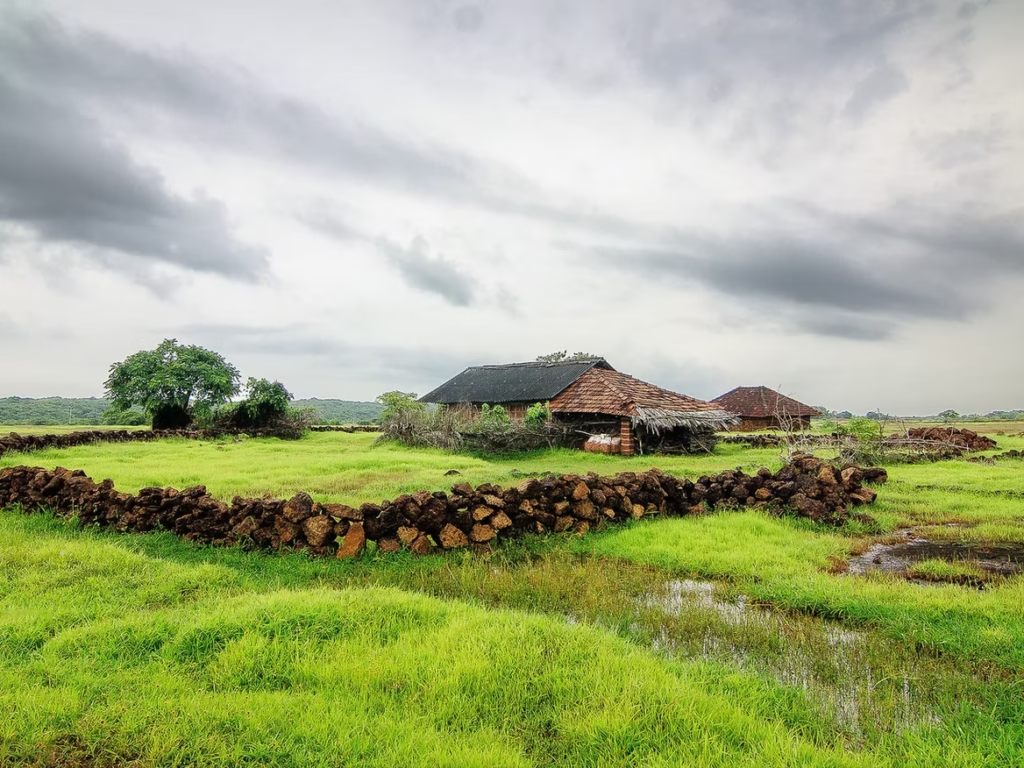
The concept of rural tourism is a growing form of tourism and gaining momentum in India. With the growing concerns over climate change and more travelers becoming conscious of their impacts, sustainable travel or green tourism is on the gradual rise in India. Rural tourism in India could help in boosting the local economy and help conserve the local culture and might prevent rural migration. Rural tourism could attract tourists by providing a glimpse of the village ambiance with local cuisines and several other cultural and traditional practices of locals in India. More than half the population in India still lives in villages and is directly dependent on natural resources for their livelihood. Hence, visiting these rural settlements and spending time with the locals will instill in travelers a new perspective on life. Best Rural villages to visit in India Kumbalangi Khonoma Ladhpura Khas Kongthong Pochampally Turtuk Grahan Laluri Khal Mawlynnong Chatpal 01. Kumbalangi Village, Kerala Photo Credit: Onmanorama A well-kept secret in the backwaters of Kochi, Kumbalangi is an island village with teeming biodiversity. Kumbalangi has been flagged as an experimental rural tourism initiative by the Kerala government. The spellbinding view of the village is mainly due to the azure backwaters, thick mangrove forests, rich paddy fields, and boat cruises that trudge the calm waters around. You can tag along with the fishermen and try fishing in the sea in the early morning hours for an unforgettable experience. You can also take a boat cruise and explore the mangroves and other regions of this island village. 02. Khonoma Village, Nagaland Photo Credit: Pelevizo Meyase via Instagram Also known as ‘The Green Village’, Khonoma is the first officially declared green village in India. The stunning vistas of forest-covered hills and mountains, panoramic view of luscious paddy fields from the village, and long winding roads and streets of Khonoma give the village an almost paradisical impression. You can spend your days in the village exploring the various traditional sites, bond with villagers over a cup of locally brewed rice beer, or trekking the famous Dzukou valley. But the most recommended activity is the farming experience that was introduced to interested travelers, where one can go to the paddy fields and get hands-on practice of the farming technique in the village. 03. Ladhpura Khas, Madhya Pradesh Photo Credit: mptourism Situated along the banks of Betwa and Gurari River, this quaint little village on the outskirts of Orchha is beaming with natural beauty. The slow-paced lifestyles of the locals, the beautiful historical sites and temples, and the friendly villagers are truly impressionable. However, what makes this village even more alluring is the motto of the village which is ‘Farm to Plate’. This agricultural village makes sure its guests are fed fresh produce right from the farms. The locals of the village are also actively working to revive the age-old cultural and traditional practices by introducing different festivals on a large scale. This act of reviving the historically and culturally important practices through food, arts, crafts, music, and farming techniques has landed the village to be nominated for the Best World Tourism Village at the UNWTO. 04. Kongthong Village, Meghalaya Photo Credit: Newsbytes A unique feature of Meghalaya, Kongthong village in the East Khasi Hills, is nothing short of perfect. One of the most unique places to visit in India, Kongthong village has a tradition so distinct and set apart from the ordinary norms, that it has earned the moniker of being called ‘the whistling village’. This is so because the natives of this village call out each other by whistling a tune instead of calling out their names. Each native has a sole and unique tune called out after them. Thus, while walking the streets of Kongthong village you will come across a lot of hoots and whistles. But apart from this unique trait, the stunning hills of the village are also pristine and serene and they serve as a perfect getaway from the maddening noises of the city. 05. Pochampally, Telangana Photo Credit: ntnews.com A village on the outskirts of the bustling city of Hyderabad, Pochampally is a weavers hamlet. Known for its famous colorful silk sarees and cotton fabrics, this village has been awarded ‘Best World tourism Village’ by the UNWTO. While in Pochampally, you can shop at the various stalls lining the streets and buy sarees, bedsheets, and other handwoven fabrics and materials. You can also visit the weaving exhibit site of the village or walk around and witness in person the locals weaving in the comfort of their homes and learn more about the practice and history of the traditional weaving patterns and techniques. 06. Turtuk Village, Ladakh Photo Credit: Ladakhtourism.net This once landlocked village on the banks of Shyok River in Ladakh is now a budding destination for rural tourism in India. Turtuk village thrives off the harmonious amalgamation of the Persian and Tibetan culture. Once occupation of the Baltistan empire, Turtuk in Balti means “desire to stay”. Nothing sounds as apt and accurate as its literal meaning in Balti as the village is shrouded in absolute beauty with crumbling barren mountains, gleaming water bodies flowing in the midst of the village, and magnificent views of snow-clad Himalayan ranges. While in Turtuk, tag alongside the local farmers to their lush green paddy fields and try your hand at farming or visit the walnuts and apricot orchards. Make sure to explore the stone walls and houses built on cobblestone alleys for a better understanding of the locals. 07. Grahan Village, Himachal Pradesh Photo Credit: Adventure Nation Nestled in the lap of Parvati Valley on the outskirts of Kasol, Grahan village is an offbeat destination. With spectacular views, stunning waterfalls, forests blanketed in deodar trees, and crystal clear streams, Grahan is a village that is straight out of a storybook illustration. A special aspect of this village is the fact that you can trek to reach the village
Pros and cons of Travelling via Travel Company
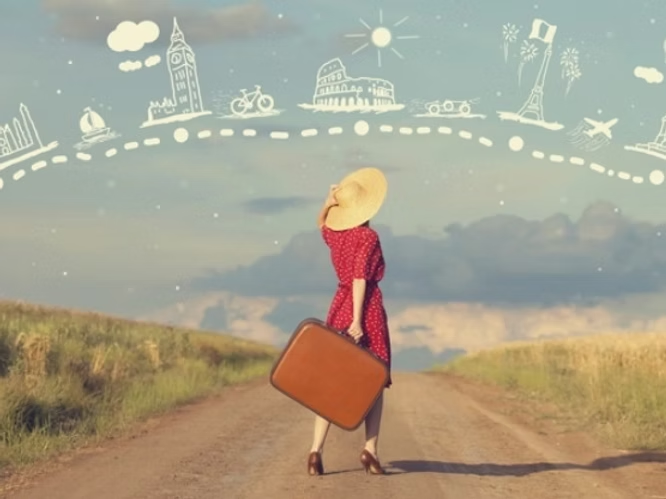
In the digital era, you get all the comforts in a click, but if it is about travel you have hardships while choosing hotels, and locations, curating the Itinerary or finding the best travel deal from companies. Indecision with approaching a company or trying your plan of action, here are a few points to remember. Pros and Cons of having a travel advisor: PROs: A pic from the retailmenot website Perks and Deals: Travel companies want their customers to be happy and strive to curate the best deals and rewards that benefit their loyal customers. Travel freaks opting for the same company for their trips would always have an edge on all voyages. A pic from the reliancemoney.com website Hassle-Free: The checklists, permits, and pre-booking tasks are managed by the operators and the experiences of these stays and activities are enjoyed by the tourists. This way, you are not relying on internet research or a potentially out-of-date guidebook. A pic from the Tarzan way website. Travel Buddy: A Pre-planned journey can sometimes go up and down due to unforeseen conditions on both ends and can only be managed by experienced men in the department like agents. The travel agents are on your side all time to ease the trail handling the hurdles and hiccups on a journey. A picture from the Balancecareers.com website. A Pro: The travel agent is a PRO as they have first-hand experiences with these places. They can also clue you into various petty things that are easier to convey person-to-person, such as local customs, hacks, survival tips, and any “do’s” or “don’ts. They also guide you about the scamster and check on safety at stays and activity spots before heading. A pic from the zurihotels website. Safety and Security: A trip to the border states or foreign destinations includes many inner line permits, security checks, Border permissions, etc., which can be unknown to the tourists of other parts and travel agents get all that on hand for us. Cons: A picture from the edit.com website. No Flexible Itinerary: You follow the group protocols, timelines, and scheduled activities. On-spot changes like extending the trip, camping at beautiful locations, taking part in ongoing activities, and trying all crazy things cannot be easy. This turns hard if you do not choose the right and suitable package for yourself. A pic from Unsplash.com Oversight Something: The tourists do have a vague travel plan with the best places to visit and top things to do before they reach the travel agent and if that does not work out somehow depending on time, money, weather, and other conditions it can be a sad travel story for the customer. A picture from Financialexpress .com website. Budget Fluctuates: The internet is loaded with guides, travel websites, pictures, and websites promoting tourism but choosing the right one among them is a task and sometimes novice travelers end up spending more for an experience. Get the thrill out of your heart with The Tarzan Way to curate your own experience for a hassle-free expedition.
Ultimate Travel Guide For An Indian Voyager

India is primed to welcome the international tourists planning a holiday for the new normal travelogue. India would be a perfect novelty trip for foreigners with distinct climatic conditions, livelihood, traditions, and sovereignty while exploring varied people, food habits, historic sculptures, shopping hauls, venerated shrines, and serene landscapes. Being an absolute vacation spot, post covid there are a few careful considerations before you plan a travel to India. Look into the details mentioned to ease you while prepping your itinerary for the popular destinations of India and explore delicacies in the narrow streets of old Delhi, Royal forts of Rajasthan, and heritage sites of Madhya Pradesh, temples of Bhuvneshwar, shopping the handicrafts at Hyderabad and boat house stay at Kerala backwaters. All the metropolis in India has a unique charm to accord the foreigners to take back the best memories from the land of Mystery and Diversity. A pic from mediasalon.com Vaccines and Norms before Boarding: Check your vaccinations dues and dates before the trip and verify the vaccines approved by WHO before booking up to the bustling cities of India. Air travelers must complete the ‘Air Suvidha self-declaration form’. Travelers from specified countries need to upload their vaccination certificate or a negative COVID-19 (RT-PCR) test report to support their Air Suvidha declaration. Rules and restrictions change timely depending on the number of cases; check it before your takeoff. COVID-19 restrictions including night curfews, section implements, and limits to public transport capacity are continued in some states and union territories. The list of the vaccines approved in India https://timesofindia.indiatimes.com/life-style/health-fitness/health-news/coronavirus-the-complete-list-of-covid-vaccines-currently-in-use-in-india/photostory/89300567.cms A picture from tripsavvy.com Minimal Backpack: Post pandemic the backpack needs to be updated with some essentials like sanitizer, disinfected spray, masks, and a medical kit. One needs to also carry a record of your prior travel and health history, vaccine certificate, and handy covid test kits. Carry the Indian currency, passport, and license if any in your pockets for road trips to ease travel time during toll checks, borders, and high alert areas. Pack only the essentials as the tourist destinations in India are well furnished to provide the best experience for the guests (Aditi Devo bhava) A pic from mytravelindia.com Curating an itinerary for your trip to India: Make a flexible trip as a long voyage would be tiresome initially and do plan a backup for unforeseen delays and shutdowns. Try planning your expedition according to the seasons to experience the best times in India. Preparing for a holiday on Christmas eve, and enjoy the best new year’s bash while staying at shacks in Kerala, Goa, or Puducherry. Planning a trip in monsoons then Gujarat, Rajasthan, and most of the southern parts with slight showers and a soothing breeze bestows the best time for travelers. In summers the hill stations like Dalhousie, Manali, and North-Eastern states would unleash high temperatures and save you from the ferocious sun. The central part of India is an all-time favorite destination with the best temperature, famous shrines, and heritage sites to add to your itinerary at any time of the year. Give it a go for the traditional attire of Indians while visiting the shrines as few temples and mosques have dress codes to follow during darshan. A click from jfwonline.com Points to consider: Remember to continue the covid habits like social distancing, sanitizing, and face shields. Take home the handmade souvenirs or best-crafted gold jewelry made by traditionally practiced craftsmen. Cope with Hindi while interacting or traveling with natives. Avoid cramped places and unhygienic food giants. Ensure you have a manual plan as the internet can’t be accessed at remote and high-altitude places. Try on bargaining skills at the popular shopping streets, the favorite time pass of Indian women. Relive your stress and treat minor body aches with natural ayurvedic massages. Travel across India with the best travel buddy-like travel way to ensure your holiday without a hiccup. Get the best out of your time, money, and energy on your fun-filled and safe journey to the cultural land.
Utmost and Ultralight Backpack for Trekking
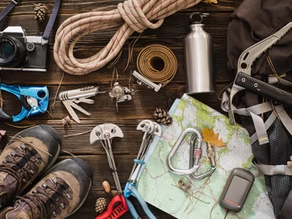
The best view comes after the hardest climb to make it hands down and put up with the fatigue, look through the jotting to be a Minimalistic hiker. Minimalistic hiking allows us to spend more time wandering around and appreciating nature. Trekking to the tops is always enduring and tiresome, carrying goods and chattels would be even more tiring, packing the essentials mean a backpack with things needed during the trek. Start with a small bag and put in only the top listed things like safety kits, basic electricals, and torch as they are always needed irrespective of your trip. Invest in handy and convertible items to bask the trek and camping without a hassle. Light weight backup is harmonious to mountaineers, adventure freaks, and novices. We segregated the trek essentials according to the seasons, duration, and regions to help you while packing the stuff. Short Trek – Stroll on weekends A picture from travel. earth website A trail to the isolated hilltops is more fun-filled and rejuvenating than a casual walk or a long drive on the busy streets of cities. Pack and unpack the stuff for a getaway would vary from long distant treks. A short trip needs a less loaded bag with little quantities and minimal essentials like basic toiletries, battery backup, safety kit, food, and beverages. As the trip is sorted and the weather could be predicted carrying stuff accordingly would be a smart move. Long Treks – Expedition to long trail A click from the travel. earth website. Long treks are all about walking miles together and unwrapping the beauty of nature on foot, bulky bags would dispirit the trekkers. Try out a minimalist approach considering versatile products and handy things like multiuser cutlery, convertible tents, and gears. Seasonal Trekking- Tread according to temperatures A picture from the sea watersports website Nature would embark you on the path of green meadows with small cascades and gushing glacier waters irrespective of seasons. Varied essentials must be picked for different temperatures and regions. Nature bestows its seasonal beauty to travelers along with challenging terrains in summer, landslides in monsoon, and avalanches in winter. To get through these tests and experience the charm on your expedition you need to be well equipped with all the essentials. Apart from the regulars’ different temperatures would hold your different needs, carrying stuff according to the destination like layers would work for cold places, comfortable tracks in summers and convertible raincoat warmer would help during monsoons and winter drizzles. Religious Treks: A pic from most spiritual treks in India blog. Heading to shrines needs similar essentials with addons and slight like traditional wear apart from tracks, pooja items for worship, comfortable footwear to walk along with palanquins, sacred things, and bathing items. As most of the religious treks are done by troops, we could list out the needed and distribute them according to the convenience. Most of the pilgrimage sites are well constructed and equipped with all the puja essentials to help the devotees. Carrying personal stuff and basic items to visit the premises would ease your pilgrim journey Plodding to the hills: A picture from the tourmyindia website. The deserted lands, forts, and few historic places are sited at the top, and reaching these places would be no less than a trek. A day pack, hiking pole, sunscreens, hydrated liquids, and headgears are some must-haves irrespective of the trip for the dry land to beat the heat. Carry tents to rest and some food to revitalize yourself as the rugged terrains would sponge the energy. Walking on milky snow: A click from the bike adventures website Sliding on the snow with a rucksack is a cakewalk, but walking against the slide, escaping the puddles dealing with icefalls, tackling health and well-being is a task. Tracking weather conditions leads to the destination, and self-health is always helpful. Most of the Himalayan ranges are blanketed with snow and need a prep before your trail like covering yourself top to toe, packing some mufflers, ear gears, poncho, and some hot beverages to maintain your body temperatures. Tourists with breathing issues need utmost care while trekking and must carry medicines and a breathing pump to avoid any hurdles.
Why it’s not the right time to travel(& why it is)

The world is recovering from a pandemic that we never saw coming and we are adamant to recover and move forward and not look back to the pain and suffering the second wave of Coronavirus had on the nation. The cases of the virus have dropped drastically and most of the restrictions have been lifted in many states so that people can get back to their affairs but the “new normal” is very difficult to become a reality. Traveling is something that had been affected the most during the lockdown and now that everyone is free to move, even people who did not like traveling are moving towards the mountains or beaches since traveling is the only cure from this state of despair. Here are a few thoughts on why you should not travel right now and why you should. The Monsoon season is upon us Most of the travelers find respite in either hilly areas or beaches and both of them are prone to dangerous natural activities during the monsoon season. The landslides in the mountains destroy roads and bridges like the one that recently happened in Kinnaur and the tides are so high on the beaches that a person can not even get close to them. Monsoon is gripping mountains roads but they look amazing! Since the travel restrictions have just opened up for traveling, people are thronging these places without prior information and knowledge about the places and even required documents due to which traffic build-up has become another problem as well. Although it might not be the best time to visit mountains or the best time to travel to beaches, it might be the right time to travel right now too. Since the cases of the Coronavirus have just started going down and people have been vaccinated, it might be right to go out on a getaway since we all have been cooped up for so long in our homes. Monsoon treks can never be better To make sure you have a safe travel journey during monsoons, do the following things: Research about the weather forecast of the place you’re visiting on the dates you’re going to travel. 90% of the time the forecast is right and you should make changes accordingly. Read recent news related to weather incidents or natural calamities in the place you’re visiting. Look out for landslides, cloud bursts, road blockage, high tides, river level rising, and thunderstorms. A few states in India have proper guidelines if you wish to enter that state for traveling. Do read the guidelines beforehand and keep your documents ready accordingly. Keep your Monsoon gear ready, raincoats or poncho, an umbrella, rain cover for bags, tire kit if you’re driving, a headlamp, waterproof phone case, mosquito repellent, and some extra socks. You can find more tips and tricks on our blog page here and if you’re looking to travel and want to create your own experience head over here. Too many people are traveling A major problem while traveling right now is that everyone is looking to travel and all the major tourist spots have witnessed a lot of crowds. Due to this influx of too many travelers, the markets and tourist attractions are getting crowded and no social distancing norms are being followed which might become a big safety issue. As a result, people are opting to stay in hotels or indoors and not wander outside to these famous attractions. People thronging the streets of Manali with no Social Distancing Due to so many people traveling and crowding major tourist attractions, another major problem is finding availability in hotel rooms and the cost of accommodation going up. Since a lot of people are traveling, it also becomes hard to have a flexible schedule and plan. Major tourist spots can be crowded with people but that’s why they are major tourist spots because tourists are going there. This might be the right time to skip these major places and head over to some amazing hidden gems near major tourist spots. Instead of Manali, visit Jibhi, instead of Shimla visit Theog, instead of Mussoorie visit Landour, instead of Nainital visit Naukuchiatal. Check out our blog on hidden gems in India here. A view from Naukuchiatal that beats all the major tourist spots It might not be the best time to visit Manali or the best time to visit Goa but if you do want to visit the major tourist spots, you can change the way you travel, try out the following things to make sure to get a safe and amazing travel experience: Try Staycation: Staycations are basically vacations where you get a wholesome experience of the place you’re staying in and enjoying all the activities and amenities of the stay while staying safe from crowds of people. Relieve your stress on a Workcation: As the name suggests it’s a combination of Work + Vacation where you take your workspace where you travel. Stay in your hotel with an amazing ambiance in your favorite location and work during the working hours and exploring when you get off work. Take the offbeat route: You can always wander on to unique and unexplored places near your destination. There are always villages and natural whereabouts where you can stay near the major tourist attractions. Start your adventure on a trekking trail: Treks are often underrated and people don’t really travel to treks since most of the travelers are looking for a peaceful getaway. You can pick up a 2-3 days hike or go on a week-long adventure on some amazing treks in India To personalize a safe experience visit our travel support page at www.thetarzanway.com/travel-support The Coronavirus is still looming at large The reason why we all want to travel is Coronavirus and the reason why we are hesitant to travel is also the Coronavirus(pretty ironic), we all are frustrated because of
Dear diary, India is amazing!
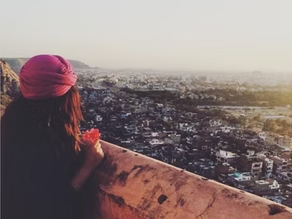
Dear Diary, Touchdown. India here I am. Made it to Spice heaven and I’m already giggling at the sight of the mystical ‘’tuk-tuks’’. Namaste replaces hello, chai replaces coffee, sarees replace jeans, temples replace churches, Bollywood replaces Hollywood!… Time to embrace the east and all that comes with it! All the amazing monuments and palaces were just so unique Wandering the overcrowded streets gives you the perfect first-hand cultural experience, the touch of cashmere hanging out the shops, the incense smell burning in every open window, the constant noise of the honks, the endless taste of spices, the sight of every color in every corner… You couldn’t be anywhere else. The Jaisalmer chapter: Survived an 18-hour long train ride, thoughts: the scenario was gorgeous plus the train gives me a much-needed adventure feel! The golden city, a small town, perfect to wander through all the majestic ancient architecture, felt like a time machine taking me back a few centuries! The greatest part about this Rajasthani city is that is situated right on the Thar desert, which in India means camel safari! I had a chance to do an overnight one! Hopping on a camel and through the desert, we go! The sunny desert was an experience to behold Feels unreal to be surrounded by endless dunes and just gaze at the horizon waiting for that mind-blowing sunset! Once is dark a fire-cooked meal awaits, followed by a singing session, just before laying in a sleeping bag with no roof, just a million stars! India, I surrender. The Jaipur Chapter – They call it the pink city for a good reason. You can see splashes of light pink in every corner, in every monument, in every shop. The city is magical, the Jal Mahal view makes you feel like you’re in a fairy tale, a castle on the water surrounded by mountains who wouldn’t? The Amber Fort is a must, ancient and magnificent. The views are breathtaking, the palace inside is full of details one didn’t know could exist. I ended my trip with a visit to the Monkey Temple for sunset. It was one of the most beautiful sunsets I’ve ever witnessed. On the top of a mountain, holds a tiny white house that keeps the absolute best of views and monkeys to keep you company. The Rishikesh chapter- I’ve done little to no research about this place but heard wanders, once I got off my tuk-tuk and walked about five meters I could see why. Here’s what you need to know about Rishikesh: there’s a gorgeous holy river called Ganga, it runs through hundreds of Himalayan mountains, it’s surrounded by waterfalls, there’s a beach, there’s river rafting, it’s the Yoga Capital of the World, there are endless temples to visit, there’s a Beatles Ashram, iconic to say the least and it has for sure the best and cheapest cafes with a breathtaking view! Is that enough to make you go? Love, Carol. ♥️ Check out how to make your own personalized travel experience with The Tarzan Way.

